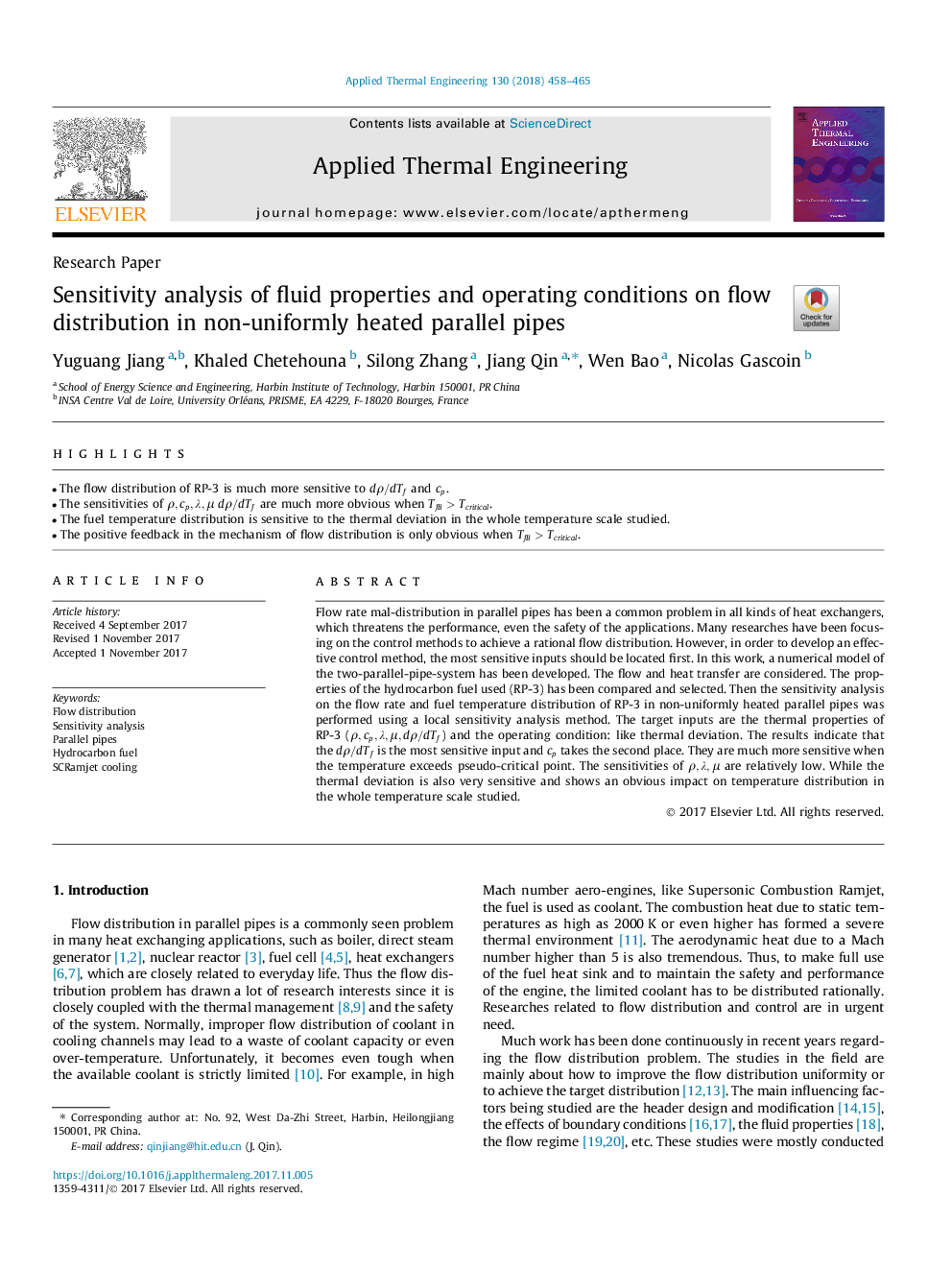| Article ID | Journal | Published Year | Pages | File Type |
|---|---|---|---|---|
| 7046394 | Applied Thermal Engineering | 2018 | 8 Pages |
Abstract
Flow rate mal-distribution in parallel pipes has been a common problem in all kinds of heat exchangers, which threatens the performance, even the safety of the applications. Many researches have been focusing on the control methods to achieve a rational flow distribution. However, in order to develop an effective control method, the most sensitive inputs should be located first. In this work, a numerical model of the two-parallel-pipe-system has been developed. The flow and heat transfer are considered. The properties of the hydrocarbon fuel used (RP-3) has been compared and selected. Then the sensitivity analysis on the flow rate and fuel temperature distribution of RP-3 in non-uniformly heated parallel pipes was performed using a local sensitivity analysis method. The target inputs are the thermal properties of RP-3 (Ï,cp,λ,μ,dÏ/dTf) and the operating condition: like thermal deviation. The results indicate that the dÏ/dTf is the most sensitive input and cp takes the second place. They are much more sensitive when the temperature exceeds pseudo-critical point. The sensitivities of Ï,λ,μ are relatively low. While the thermal deviation is also very sensitive and shows an obvious impact on temperature distribution in the whole temperature scale studied.
Related Topics
Physical Sciences and Engineering
Chemical Engineering
Fluid Flow and Transfer Processes
Authors
Yuguang Jiang, Khaled Chetehouna, Silong Zhang, Jiang Qin, Wen Bao, Nicolas Gascoin,
